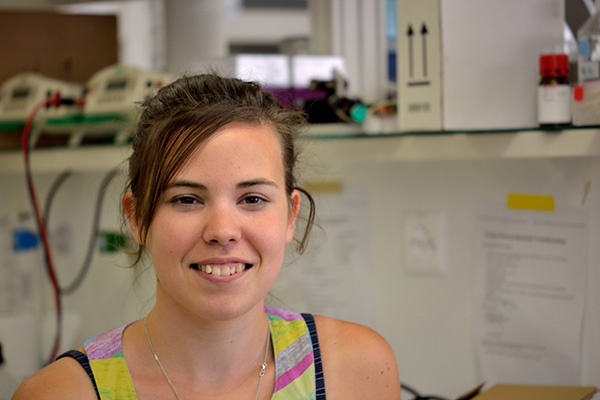Margot Riggi

The evolutionary-conserved TOR Complexes are orchestrating diverse aspects of cell growth and proliferation. Specifically, TOR Complex 2 (TORC2) is a key player in the maintenance of cell surface area and plasma membrane tension homeostasis. However, our understanding of the molecular interplay between the mechanical stimulus of altered membrane tension and the biochemical response, i.e. TORC2 activity, was so far hindered by the lack of potent and specific tools to acutely impinge on these parameters. I am now combining the power of yeast genetics and small molecules with leading-edge technologies to probe for tension within biological membranes, to study how TORC2 both regulates and is regulated by plasma membrane tension.

Using a fluorescent biosensor, we monitored the formation of Phosphatidylinositol-(4,5)-biphosphate clusters upon a decrease of plasma membrane tension induced by a hyperosmotic shock applied to single yeast cells.
I’ve been a joined PhD student between the Roux lab and the Loewith lab in the Molecular Biology department since September 2013. Previously, I studied Biology and Biochemistry at the Ecole Normale Supérieure de Cachan, near Paris, from which I obtained both my Bachelor and Masters degrees. I did one of my Masters internships at the Geneva University, and it turned out to be such a success on both a professional and personal level that I decided to return to do a PhD there.
I am now studying the molecular interplay between the evolutionary-conserved TOR Complex 2 and plasma membrane tension, using the budding yeast as a model organism.
